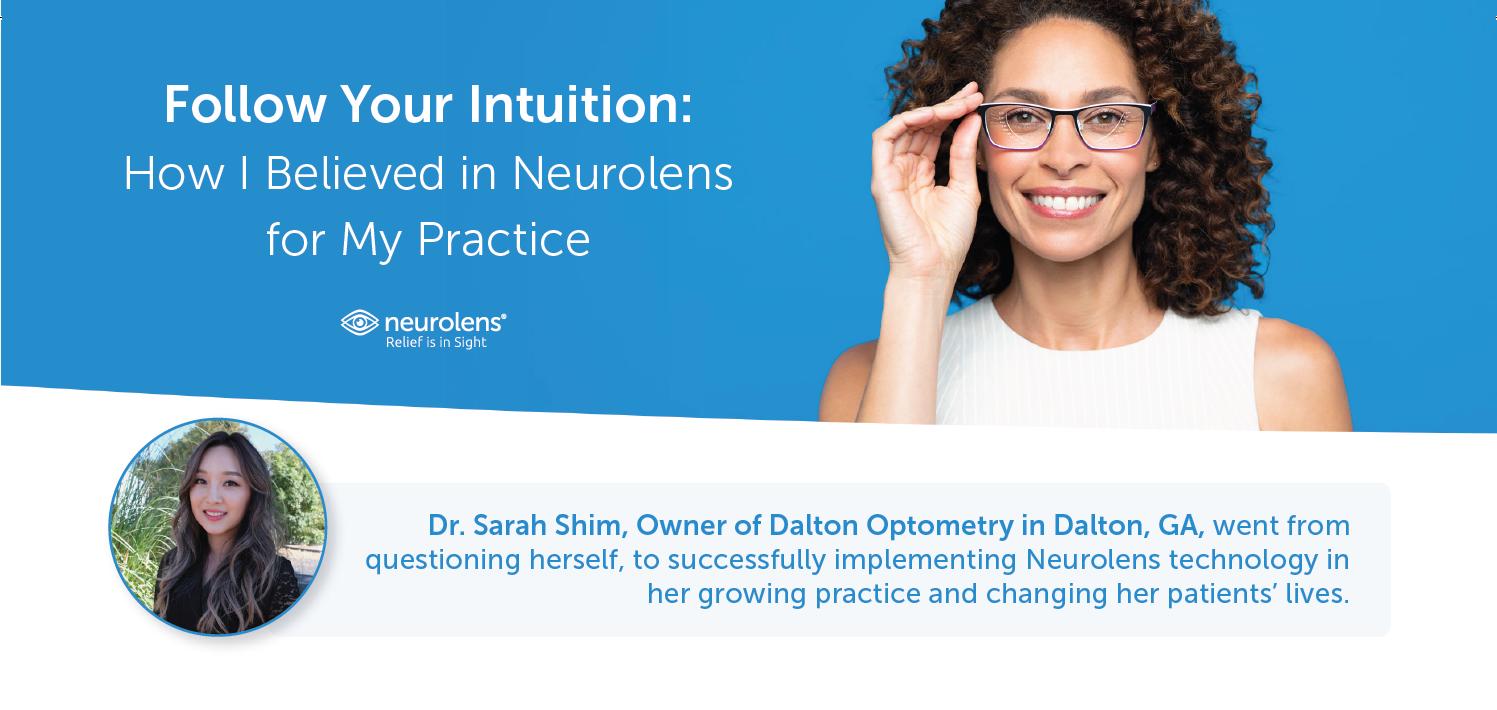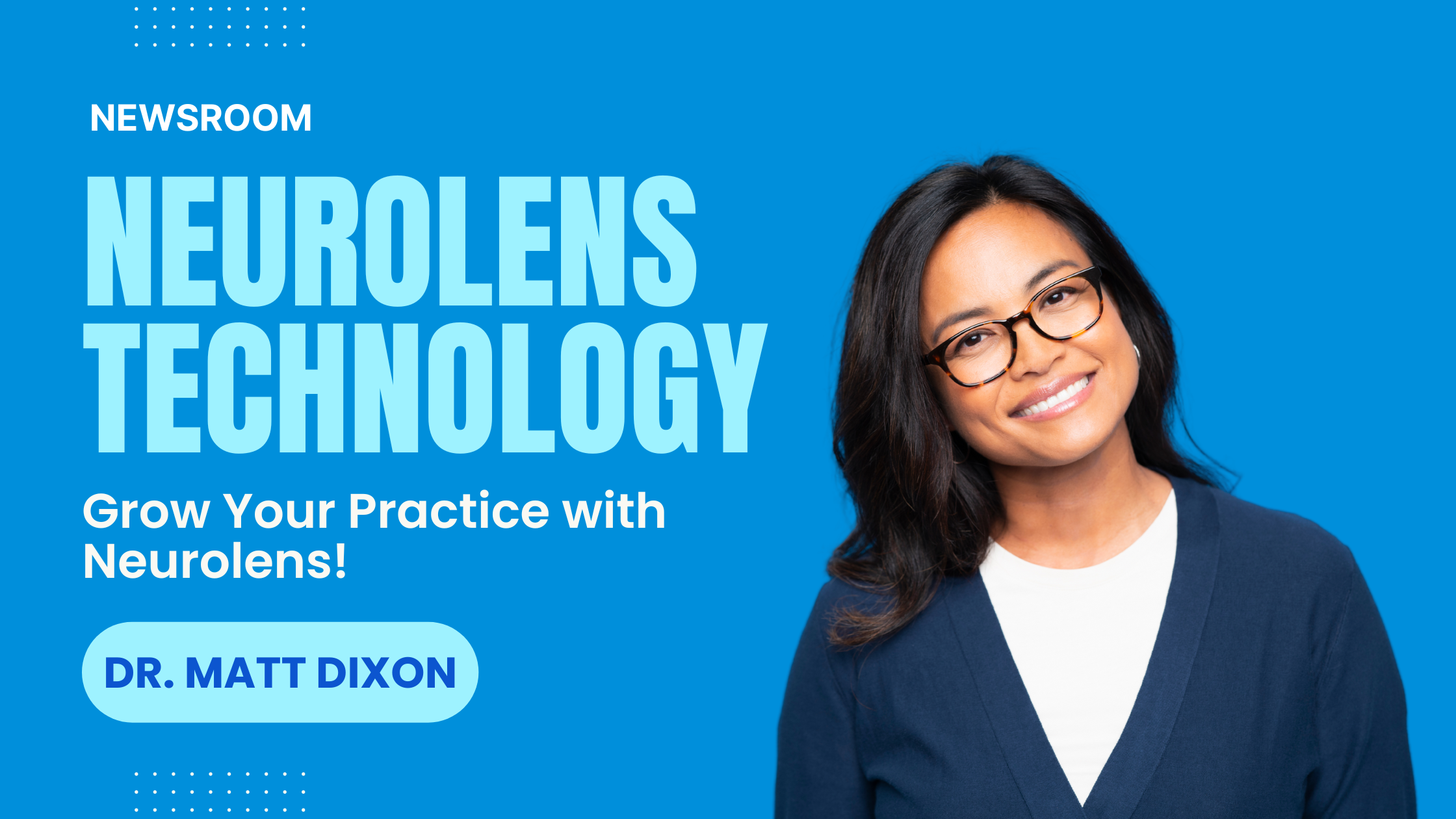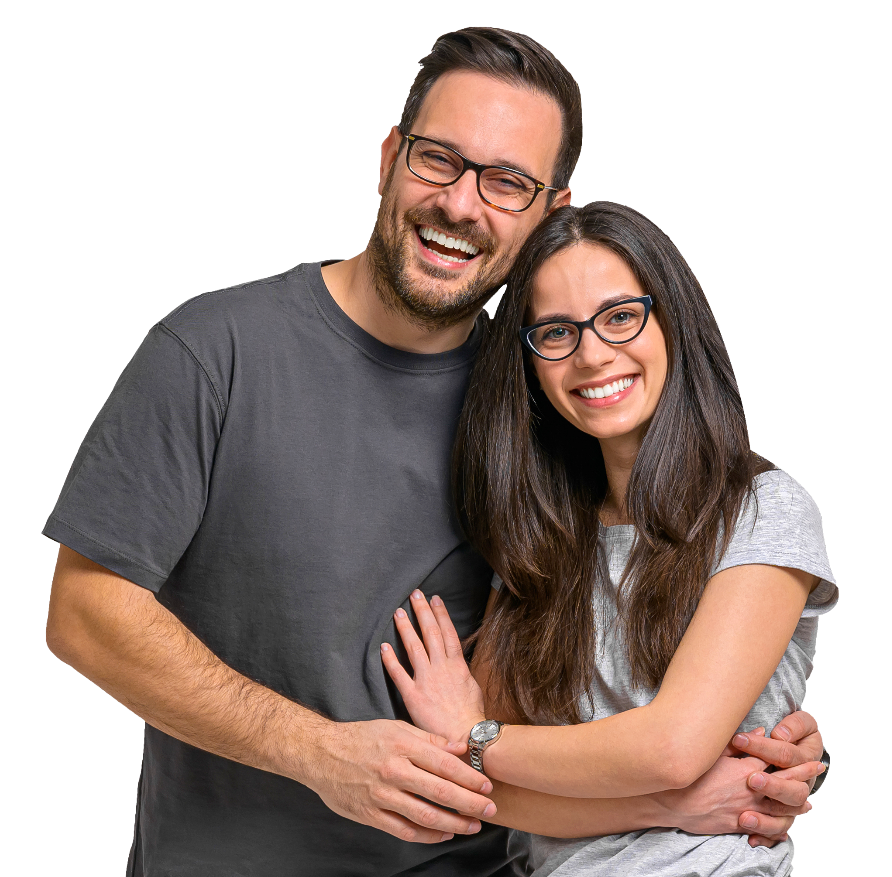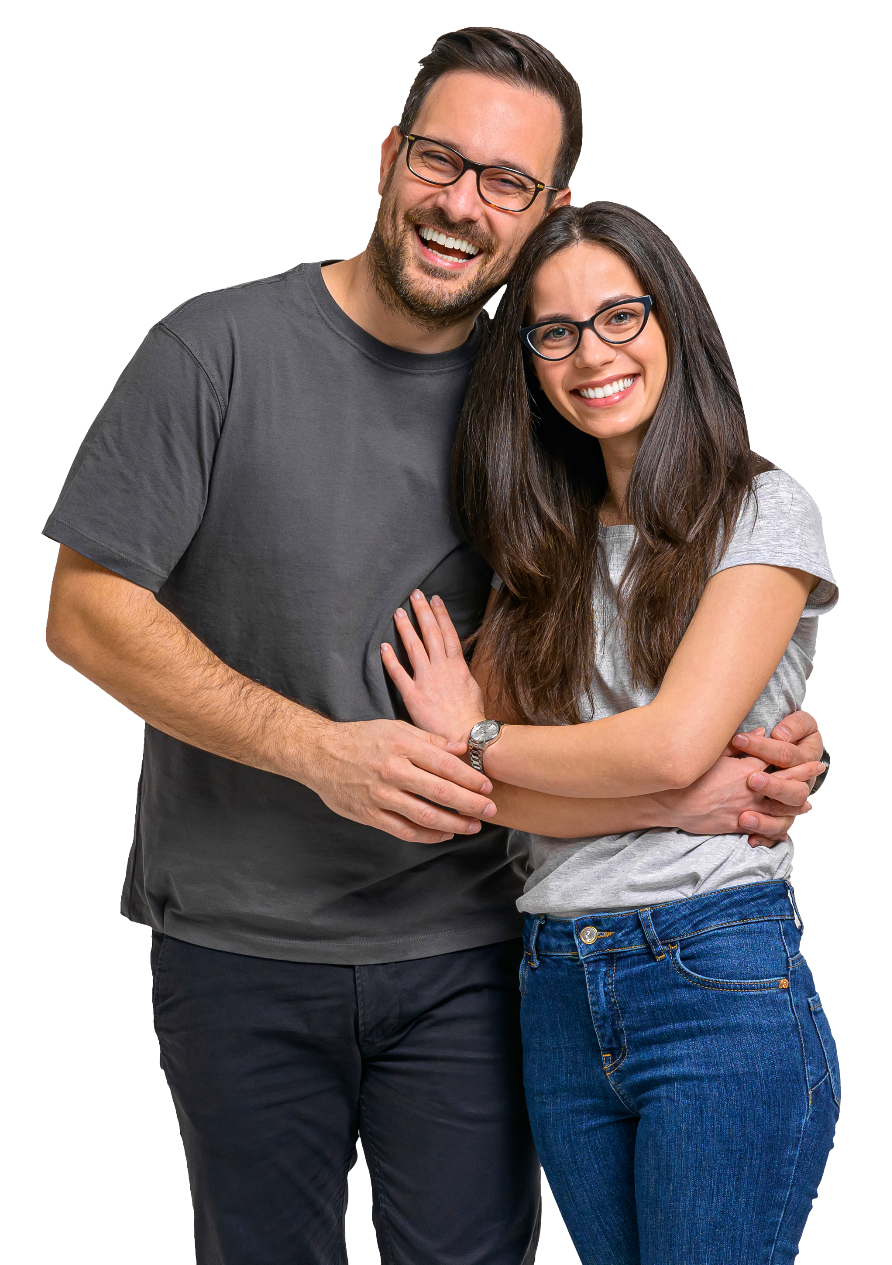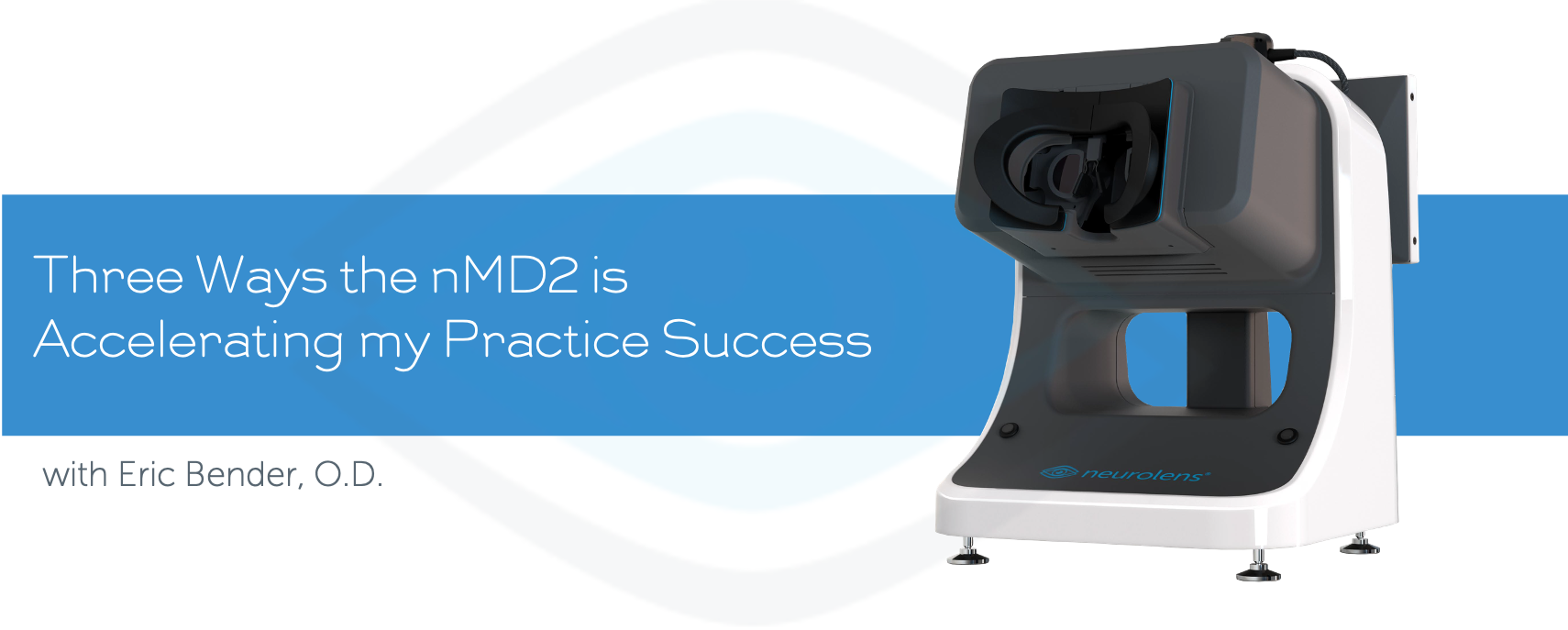
Three Ways the NMD2 is Accelerating My Practice Success
I have been a Neurolens provider since January of 2018. I was initially skeptical of the claims Neurolens was making about the frequency of patient symptomology—specifically that “at least two out of three patients experience the symptoms of eye misalignment.” I was certainly aware that Digital Vision Syndrome (DVS) was becoming increasingly common, but I didn’t realize just how common these symptoms were until I adopted a technology that could truly address them. Like many of my colleagues, I too had used lenses with accommodative boosts or blue light blockers with varying degrees of success; but with Neurolens technology, I had finally found a demonstrably effective way to address these symptoms with my patients.
Three years later, neurolens asked me to be a beta user for their new Neurolens Measurement Device, Gen 2 (NMD2). I was told that the NMD2 could accomplish the same level of diagnostic accuracy—within 0.1 Prism Diopters—in a much smaller design, with a faster patient evaluation period. Despite my historical success with Neurolens innovations, I found myself again to be skeptical of these claims; however, that skepticism was quickly shown to be misplaced.Here are three ways that implementing the NMD2 has already positively impacted my practice.
#1. The faster test allows me to screen every patient.
My eyecare provider colleagues will likely agree wholeheartedly with the following statement: patients are exhausted. The events of 2020 led to heightened anxiety in a number of areas, and most certainly led to increased prevalence of symptoms such as headaches and eye strain. Remote working and learning are simply a part of daily life for most people, essentially taking us from having a symbiotic relationship with our digital devices to be subservient to our digital devices! Limiting screen time or taking frequent breaks just isn’t realistic or even possible for most people.
This of course leads to a high degree of symptomology in patients. Unfortunately, patients are unlikely to connect these symptoms to their eyes, and subsequently unlikely to mention these symptoms to their eyecare provider. For this reason, it is imperative to screen every patient in order to ensure no patient is missed. But practices get busy, and this imperative becomes a challenge.
The modus operandi in my practice (and the recommended process from Neurolens) is to screen every patient for symptoms, then run the symptomatic patients through the NMD. I admit, however, that on particularly busy days this is challenging. The test time on the first-generation NMD is less than three minutes, which is substantially faster than traditional, subjective testing methods like Maddox rods or prism bars. But reducing the test time by 35% for the NMD2 actually made a pretty significant impact on our ability to run all symptomatic patients through the device to clinically determine their degree of eye misalignment. I am confident that we are now able to identify even more symptomatic patients on a daily basis.
#2. The smaller design actually makes diagnosing patients easier.
The NMD2 is indeed significantly smaller than the first-generation NMD, and I can see it easily fitting into any pre-test space in any practice. While getting back some valuable space in my pre-test area was certainly beneficial, there was an additional benefit to the smaller design that I had not anticipated: it’s actually easier to test patients on the NMD2.
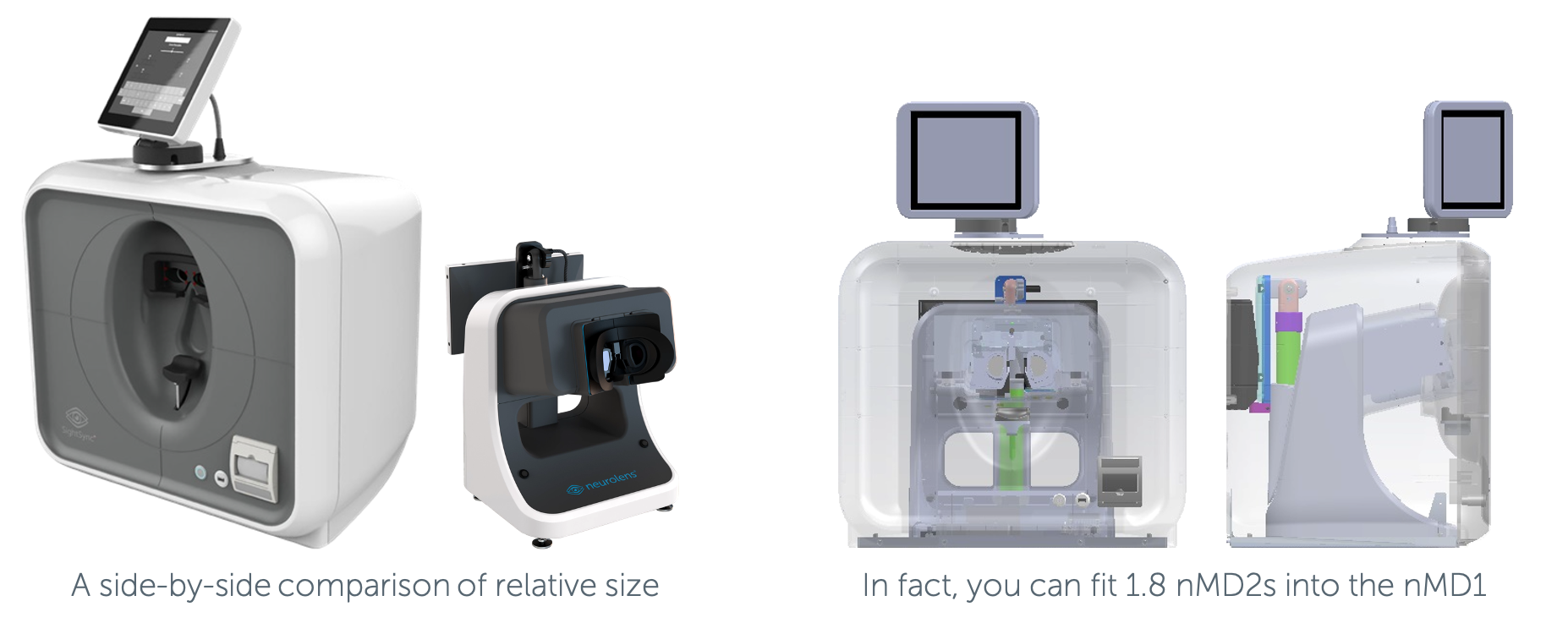
Whereas the NMD has an inset with a chinrest for patients to access the eyepiece, the nMD2 has free space surrounding the eyepiece. This benefit of this is simple: it allows patients of all face shapes and head sizes to easily utilize the device without significant adjustment. The free flow of air around the eyepiece also prevents the possibility patients feeling trapped or claustrophobic. This creates a more relaxed patient, which in turn leads to an easier testing experience and a more confident diagnosis.
#3. The more immersive test has resulted in better diagnostic information.
The NMD2 doubles the field of vision of the NMD, to 70 degrees from 35 degrees. This results in a much more immersive testing environment for the patient. The obvious benefit is the increased amount of peripheral stimulation made possible by this change. The practical result of this is that the diagnostic information from the device has been even more precise than the already-accurate diagnostic information I was receiving from the NMD. The NMD already measures binocular vision to a degree of accuracy that simply isn’t possible with traditional measurements; but somehow the NMD2 has managed to achieve an even greater level of precision.
The NMD2 is worth the investment in your practice and patients.
No surprise, but Neurolens has done it again! Right off the bat, I was impressed that Neurolens was able to fit such cutting-edge eye tracking technology into such a sleek, practice-friendly design. The NMD2’s faster, more immersive test has allowed me to evaluate every single patient that walks in my door with a potential eye misalignment. Uncovering every patient need is my mission as an eyecare provider, and the NMD2 helps me accomplish that mission.
I encourage all eyecare providers to discover how Neurolens and the NMD2 can benefit their practice as it has benefited mine.

